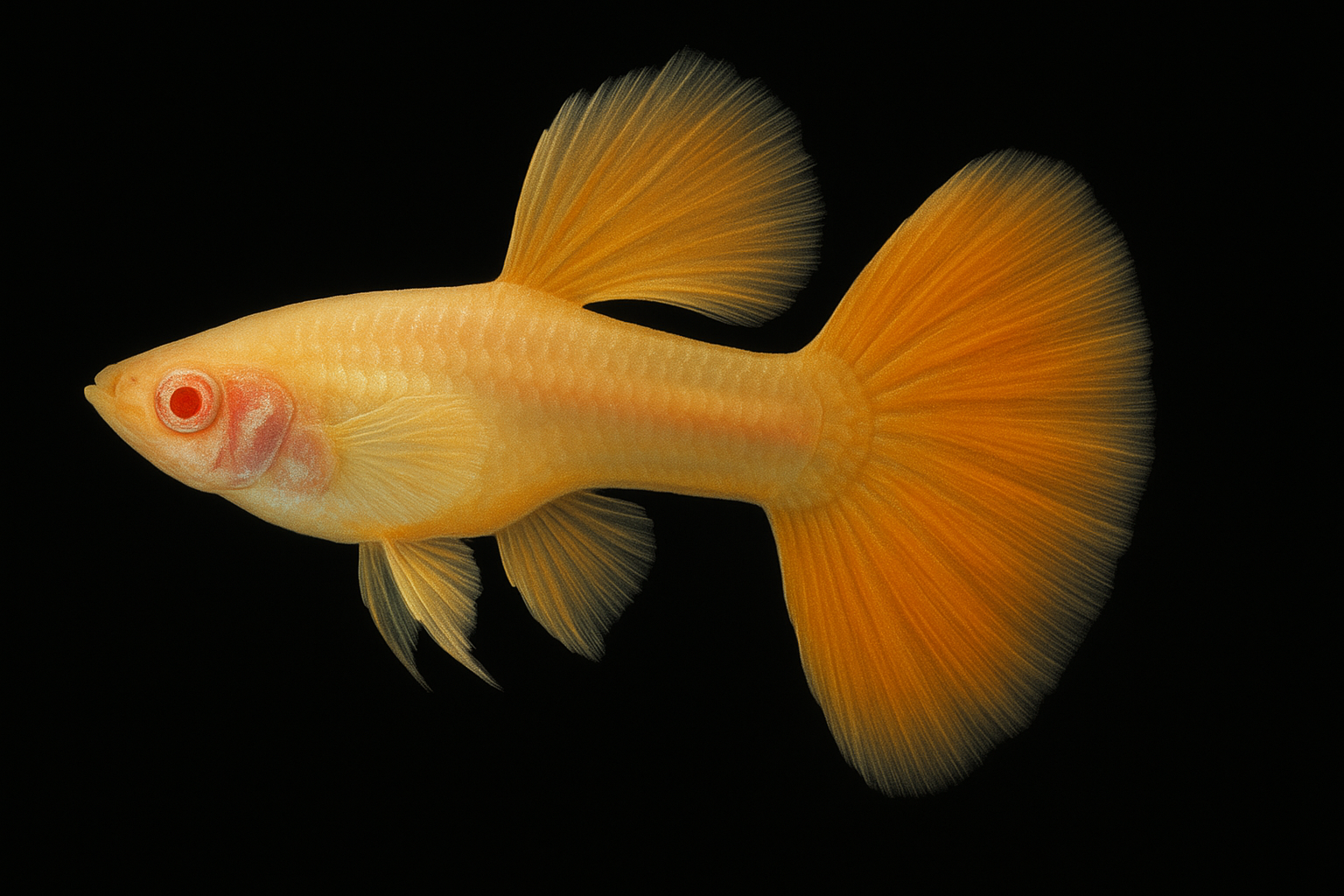The Albino Gold Guppy is one of the most stunning and sought-after guppy varieties in the aquarium hobby. With its glowing golden body and striking red or pink eyes, this fish stands out as a shimmering gem in any freshwater tank. Not only are they visually captivating, but they are also relatively easy to care for, making them an excellent choice for both beginners and experienced aquarists alike.
In this comprehensive guide, we’ll dive deep into the origins, care requirements, breeding tips, tank setup, feeding habits, common health issues, and more for the Albino Gold Guppy. If you’re planning to keep this vibrant variety or looking to optimize your care techniques, this article will serve as your complete reference.
What is an Albino Gold Guppy?
The Albino Gold Guppy is a selectively bred strain of the guppy (Poecilia reticulata) that features golden-colored bodies with the characteristic red or pink eyes of albinism. The lack of melanin is responsible for their eye color and lighter body tone. When combined with golden pigmentation, the result is a radiant and ethereal appearance that has made this strain incredibly popular among guppy enthusiasts.
Key Features:
- Scientific Name: Poecilia reticulata
- Common Name: Albino Gold Guppy
- Origin: Selectively bred (not found in the wild)
- Size: Up to 1.5 – 2.5 inches
- Lifespan: 2–3 years
- Color: Metallic gold body, red or pink eyes
- Temperament: Peaceful
- Difficulty Level: Easy to moderate
Origins and Genetics of Albino Guppies
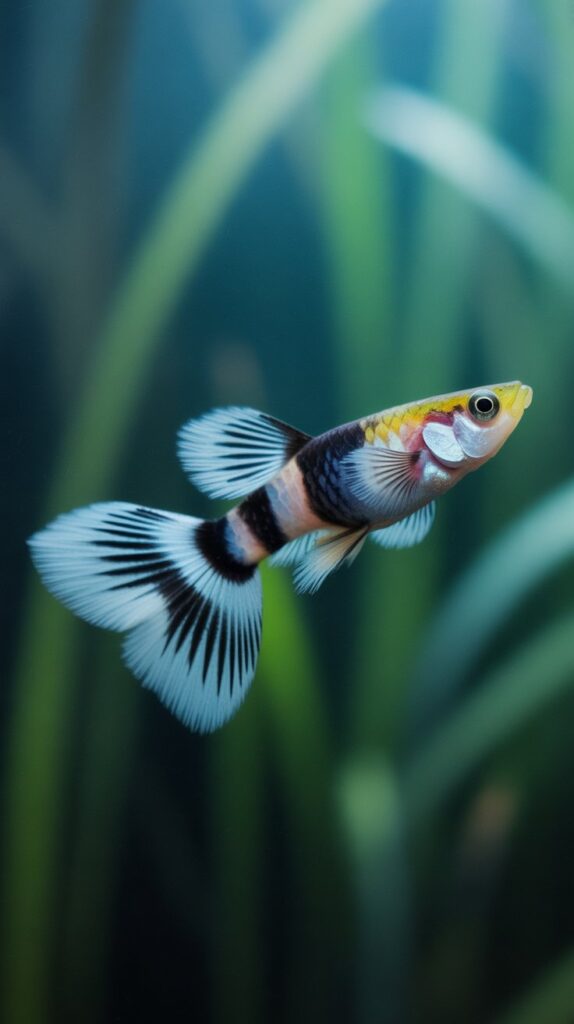
Albino guppies are not naturally occurring in the wild. Instead, they are the product of careful selective breeding. Albinism in guppies results from a recessive gene that removes melanin production. When this genetic trait is paired with a gold body coloration, breeders produce the Albino Gold variant.
Breeding albino guppies can be challenging because both parents must carry the albino gene. Albino Gold Guppies are therefore considered a specialty breed within the guppy world, and maintaining their color purity requires experienced breeding strategies.
Albino Gold Guppy Appearance
What sets Albino Gold Guppies apart from other guppies is their shimmering golden body, translucent fins, and striking eyes.
Physical Characteristics:
- Body Color: A vibrant golden-yellow, sometimes with a metallic sheen.
- Eyes: Red or pink due to the absence of melanin (typical of albinism).
- Fins: Often semi-transparent with a golden hue or slight orange tones.
- Tail: Can vary in shape—fan, delta, lyretail—depending on breeding.
Their appearance makes them a standout in any aquarium, especially when housed with darker or contrasting fish.
Ideal Tank Conditions
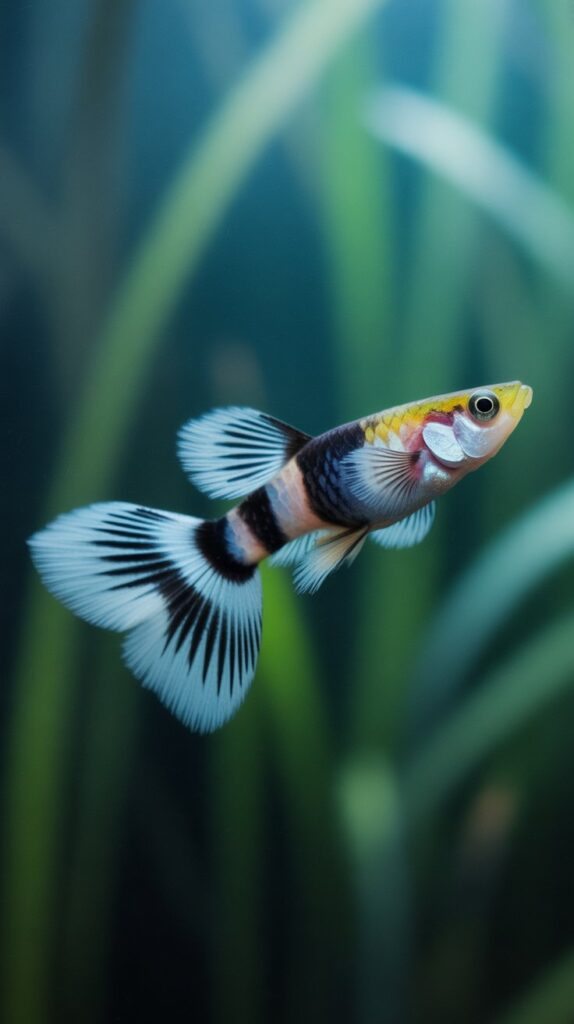
While Albino Gold Guppies are hardy and adaptable, maintaining optimal conditions will ensure their best health, coloration, and lifespan.
Recommended Tank Setup:
- Tank Size: Minimum of 10 gallons for a small group; 20+ gallons preferred.
- Water Temperature: 72°F to 82°F (22°C to 28°C)
- pH Level: 6.8 – 7.8
- Water Hardness: 8 – 12 dGH
- Filtration: A gentle sponge filter or hang-on-back filter with low flow
- Lighting: Moderate lighting to highlight their coloration
- Substrate: Sand or fine gravel
- Plants: Java moss, guppy grass, Anubias, or Hornwort
- Decor: Driftwood and caves to provide hiding spots
Avoid overcrowding the tank and maintain consistent water changes (25–30% weekly) to keep the environment healthy.
Diet and Nutrition
Albino Gold Guppies thrive on a balanced and varied diet. Their golden coloration can be enhanced through certain high-quality foods that are rich in carotenoids and natural pigments.
Best Foods for Albino Gold Guppies:
- Flake Foods: High-quality tropical fish flakes as the base diet
- Pellets: Micro pellets formulated for livebearers
- Live Foods: Daphnia, brine shrimp, mosquito larvae, and bloodworms
- Frozen Foods: Mysis shrimp, tubifex worms, and krill
- Vegetables: Blanched spinach or zucchini for fiber
Feed them small portions 2–3 times daily, ensuring no leftovers remain in the tank to avoid water contamination.
Behavior and Tank Mates
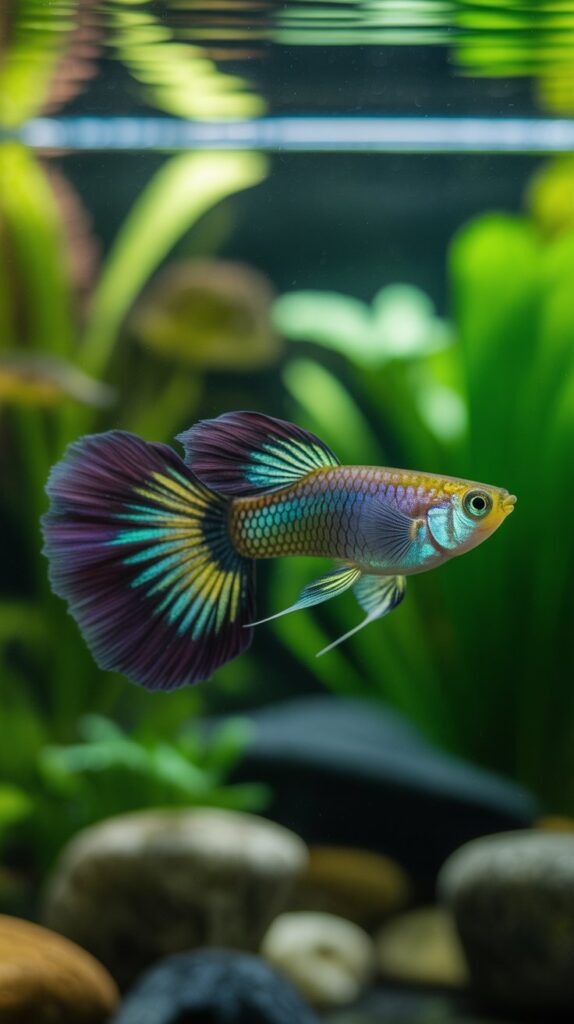
Albino Gold Guppies are peaceful and social. They enjoy being in groups and are ideal community tank residents.
Compatible Tank Mates:
- Other Guppies
- Mollies
- Platies
- Swordtails
- Corydoras catfish
- Neon or Cardinal Tetras
- Harlequin Rasboras
- Cherry Shrimp
- Snails (like Nerite or Mystery)
Tank Mates to Avoid:
- Aggressive or fin-nipping fish (e.g., Tiger Barbs, some Bettas)
- Larger predatory species
- Fish with drastically different water requirements
Keep Albino Gold Guppies in groups of at least 3–6 to prevent stress and encourage natural behavior.
Breeding Albino Gold Guppies
Like all guppies, Albino Gold Guppies are livebearers, meaning the female gives birth to free-swimming fry instead of laying eggs. Breeding them is relatively easy, but producing true Albino Gold offspring requires some genetic knowledge.
Breeding Tips:
- Pairing: Choose a healthy male and female Albino Gold Guppy.
- Breeding Tank: Set up a separate tank with fine-leaved plants or a breeding box.
- Gestation: Lasts about 21–30 days.
- Fry Care: Remove adults after birth to prevent fry from being eaten.
- Feeding Fry: Offer baby brine shrimp, crushed flakes, or micro worms.
To maintain the albino gene, both parents must be albino or carry the recessive albino trait. Crossbreeding with non-albino guppies may dilute the golden color and result in non-albino offspring.
Common Health Issues
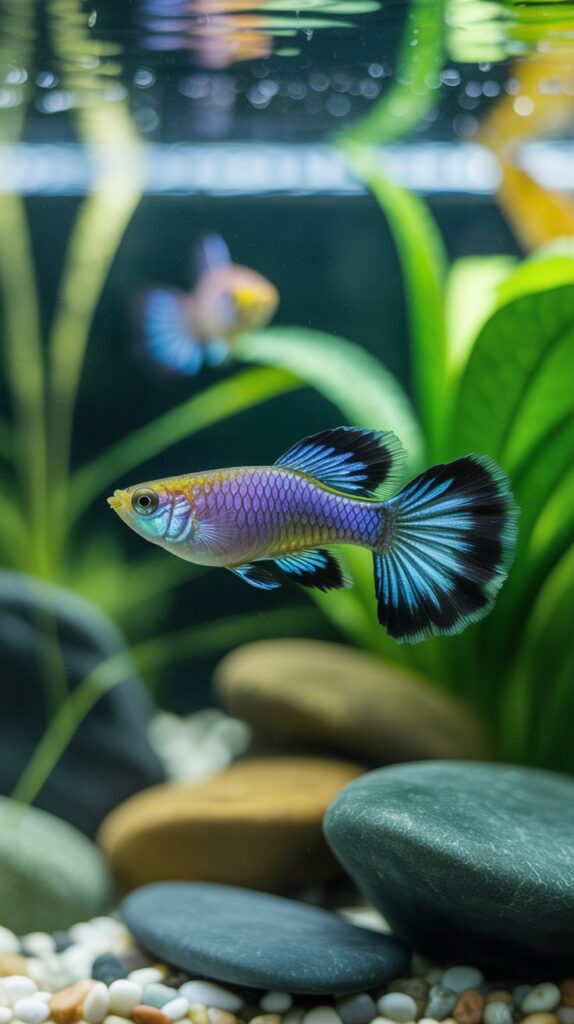
Though Albino Gold Guppies are relatively hardy, they are more sensitive to light and water conditions than standard guppies. This is due to their lack of melanin, which offers protection in normal guppies.
Common Health Problems:
- Ich (White Spot Disease): Caused by poor water quality or sudden temperature changes.
- Fin Rot: Bacterial infection from unclean water or injuries.
- Swim Bladder Disorder: Overfeeding or poor diet can cause buoyancy issues.
- Fungal Infections: Appear as white cotton-like patches.
- Albinism Sensitivity: More prone to UV light damage—avoid intense lighting.
Prevention:
- Maintain clean water conditions
- Use a heater and thermometer to ensure stable temperature
- Quarantine new fish
- Avoid overfeeding
- Use aquarium salt when needed (not with live plants)
Advantages of Keeping Albino Gold Guppies
- Stunning Visual Appeal: Their golden hue adds a majestic touch to any tank.
- Peaceful Nature: Great for community aquariums.
- Easy to Breed: Ideal for hobbyists looking to start breeding.
- Small Size: Perfect for nano tanks and limited spaces.
- Educational Value: A good choice for learning about genetics and breeding.
Disadvantages
- Light Sensitivity: May be affected by strong aquarium lighting.
- Genetic Challenges: Maintaining the albino gene requires careful breeding.
- Fry Predation: Adults may eat their young without a breeding strategy.
- More Prone to Stress: Albino varieties may be less tolerant of unstable conditions.
Tips for Enhancing Coloration
- Provide a high-carotenoid diet (foods like krill and spirulina)
- Keep stress levels low with proper tank mates
- Use neutral-colored substrates and backgrounds
- Avoid overly bright lighting that could harm or stress them
- Maintain a regular water change schedule
Final Thoughts
The Albino Gold Guppy is a perfect blend of beauty, uniqueness, and peaceful temperament. Whether you’re a beginner aquarist or an advanced guppy breeder, this fish can bring life and elegance to your aquarium. With proper care, attention to diet, and clean water, these shimmering guppies will thrive and may even reward you with new generations of golden offspring.
FAQs: Albino Gold Guppy
Q1: How can you tell if a guppy is albino?
Albino guppies have red or pink eyes due to the lack of melanin. Their body color is also lighter, often in shades like gold, white, or pale yellow.
Q2: Are Albino Gold Guppies more sensitive than regular guppies?
Yes, they are slightly more sensitive to light and water quality due to their lack of melanin, which normally protects against light and environmental stress.
Q3: Can Albino Gold Guppies live with Betta fish?
Generally, no. Bettas may be too aggressive and could nip the guppies’ fins, especially due to their bright colors and flowing tails.
Q4: How many Albino Gold Guppies should I keep?
It’s best to keep at least 3–6 to encourage social behavior and reduce stress.
Q5: What is the ideal breeding ratio for Albino Gold Guppies?
Maintain a ratio of 1 male to 2–3 females to prevent the females from being constantly harassed and to increase the breeding success rate.
Q6: What’s the lifespan of an Albino Gold Guppy?
They typically live for 2–3 years, though this can vary depending on care and environment.
Q7: Do Albino Gold Guppies require special lighting?
They should be kept under moderate lighting. Avoid intense direct lighting to protect their sensitive eyes and skin.

